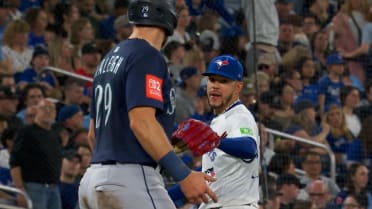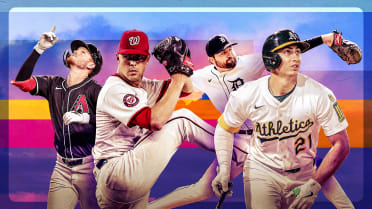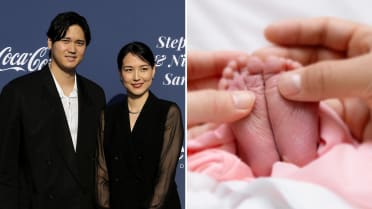CLEVELAND – For the first time in a while, the Indians will have some competition at Spring Training for a spot in their starting rotation, and it’s happening in a year where there are an abundance of question marks about workload.
In 2020, no pitcher in the Major Leagues threw more than 84 innings because of the pandemic-shortened season. In 2019, 15 pitchers (including Shane Bieber) threw more than 200 innings. The drastic difference in workload has many wondering whether starters will be able to jump right back into a full 162-game season and toss as many frames as their bodies had become accustomed to year after year.
“I do think we will be monitoring players and be very thoughtful about how we build guys up and how we monitor workload and fatigue,” Indians president of baseball operations Chris Antonetti said, “not just for the start of the season but for the balance of the season.”
Some teams may decide to utilize a six-man rotation to help build starters up at the beginning of the season, but the Indians said they’ll be sticking with a regular five-man rotation because of the five off-days they have in April. From there, each pitcher’s workload will depend on the individual himself.
“The way we generally look at that is we don't have hard and fast rules or place blanket policies on players,” Antonetti said. “What we try to do is think about each player as an individual and what positions them to be healthy and successful.”
Let’s take a look at the early plans:
Shane Bieber: There’s no reason to believe that Bieber will need to be overly cautious with his workload. While the team will certainly keep a close eye on its ace while he continues to build up to midseason form, Antonetti has praised the way Bieber consistently prepares himself each offseason to be ready to go for Spring Training. Even though the righty will need to miss the first few days of camp due to testing positive for COVID-19, he’ll still be able to build a solid foundation this spring to help put him in the best position to reach 200 innings again.
Zach Plesac: “I’ll be a horse,” Plesac said. “I’m ready to take on as many innings as I can and I’m going to go out there and give as much as I can as long as I can.”
Anyone who follows the 26-year-old on social media knows that he hardly (if ever) took a day off this winter. Plesac was constantly updating his Instagram with intense workout videos, demonstrating all the work he was putting in to top his impressive 2020 campaign. The righty prepared himself to be ready to take on as many innings as possible, despite only tossing 55 1/3 innings last year after his 115 2/3 frames in the big leagues in 2019.
“For those of you who have been around Zach,” Antonetti said, “he is a physical guy who is an incredible athlete, as athletic as any player and pitcher we have. So from a physical standpoint, he's conditioned to do that. Now, how that'll be play out on the field and is he able to maintain that strength while pitching, we'll have a chance to see and monitor, but we have no reason to think otherwise with Zach.”
Aaron Civale: Civale tossed a career-high 164 2/3 innings in the Minors in 2017, but in his time in the big leagues in each of the last two years, he didn't throw more than 74 frames. The Indians will get a feel for how much they’ll be able to get out of Civale early in the season during Spring Training, but the way that the 25-year-old has continued to develop indicates that he’ll be able to handle a decently large workload. Will he be close to 200 innings like Bieber and Plesac could be? Maybe not.
Triston McKenzie: Here’s where we may see more of a significant difference in monitoring a pitcher’s workload. McKenzie went two years without competing in a game setting because of various injuries. He made his debut last August and owned a 3.24 ERA in eight games (six starts) for the Tribe. He’s proven enough to easily be penciled into the rotation, but the club will need to monitor the number of innings he tosses after missing so much time and returning during a shortened season.
“Triston Mackenzie's career path and recent history is very different than Shane Bieber,” Antonetti said, “so to set similar workload restrictions on Shane as Triston probably doesn't make a lot of sense.”
Fifth starter candidates
The Indians will need to use the next six weeks to see who becomes the clear choice to secure the final spot in the rotation, but for now, the two hurlers with the most Major League experience may be the two early favorites.
Cal Quantrill: He’s bounced back and forth between starter and reliever in his time in the big leagues. While he began as a starter for the Padres in 2019, Quantrill saw the majority of his time in relief last year. But when he was traded to Cleveland at last year’s Trade Deadline, he was clear that he still views himself as a starter. If he's able to win the fifth starting spot, would he be able to quickly build himself up after tossing just 32 innings last year?
“Yes, throwing 100 pitches [in a game] can be challenging,” Quantrill said. “You prepare your body to do that. I have all the confidence in our staff and myself that I’ll be ready to do that. For me, it’s about dominating every single hitter. … I’m going to try to bring some of the positives I’ve learned from being a reliever and just implement that as a starter, which, quite honestly, I’ve done a lot more starting in my career than relieving.”
Adam Plutko: Plutko has been fighting for a spot in the Indians' rotation for the last few years, and 2021 will be no different. But Plutko said he’s no longer concerned about whether he’ll be a part of the rotation or the bullpen. So, 2021 could look very similar to Plutko as the past few seasons, seeing time in both roles, which means his innings count will probably be lower than most. But he’s ready for the challenge if it’s presented to him.
“Will there be a challenge? Yeah,” Plutko said. “But I also think we lead the league in the best training staff. I think we lead the league in doing things right off the field and preparing players, and that's going to be more integral than ever.”
Mandy Bell covers the Guardians for MLB.com. Listen to her on the Ballpark Dimensions podcast with Sarah Langs.




